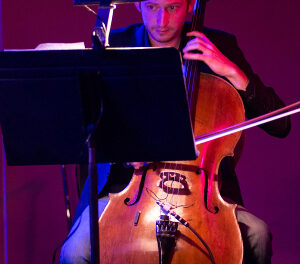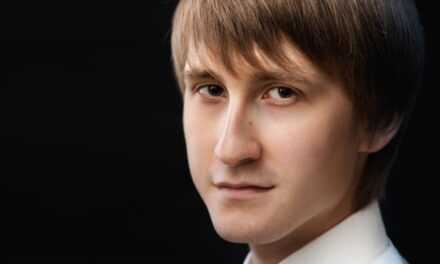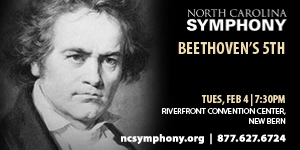“Sitkovetsky & Friends” is the name of the series the Greensboro Symphony devotes to chamber works of various formats and sizes. On Friday, January 21, a large crowd in the Recital Hall in the UNCG Music Building was greeted with the wonderful news that Garson Rice and Rice Toyota have agreed to sponsor the Sitkovetsky & Friends series starting next season. This means that the musicians, who until now have donated their time and talents, out of love of their art, will be paid for the concerts. This is quite important because rehearsing chamber music is labor intensive, requiring more time and care and attention to detail than orchestral playing, where there is safety in numbers and where the acoustical volume of the hall is more forgiving.
The seeming oxymoron of youth and maturity fittingly describes the program. A very late work of Czech composer Leos Janácek entitled “Youth” was paired with a surprisingly mature work written by the teenaged Felix Mendelssohn.
The first work on the program was Janácek’s Mládí (Youth), for woodwind sextet, the usual wind quintet augmented by a bass clarinet. Written late in the composer’s life, this intriguing and charming work retrospectively describes youth. The work, in four movements, is filled with devices typical to Janácek, such as rapid ostinato figures in accompaniments, the use of rhythms and cadences imitating speech and, like Dvorák, ample use of elements of native folk music.
The main theme of the first movement is said to intone, “mládí, zlaté mládí” (“youth, golden youth”). The modal effect of folk music is pronounced in this movement, as are the intricate cross rhythms so dear to Dvorák and to Brahms before him. A tongue-in-cheek Andante Sostenuto follows, and then a rollicking Scherzo marked Vivace. Here the sextet engaged in constant syncopation and rhythmic revelry. The closing Allegro Animato is brief and brilliant. The whole work is charming and too rarely heard. The musicians from the Greensboro Symphony absolutely mastered the difficulties and intricacies of the sextet: Debra Reuter-Pivetta, a shiny bright flute, Mary Ashley Barrett, a swift and bright oboe, Edwin Riley, a nimble (especially in the fourth movement) clarinet, James Kalyn and Carol Bernstorf, who added warm and dark tones on bass clarinet and bassoon, respectively, and Lynn Beck, who made the virtuoso writing for the horn sound easy.
The Mendelssohn Octet, written for two string quartets but sounding like a string orchestra, is a work full of rich sounds and mature musical ideas. Whereas the Janácek sextet was written at the end of a rich and long life, the Octet was written by an adolescent of 16. True, he had already penned a dozen symphonies for strings, but the originality and energy of the Octet have made it a major work in the chamber music repertory.
This performance of the Octet was thrilling, from the exuberant opening arpeggios of the first violin (Sitkovetsky) to the closing Handel-like fugue (“And He shall reign for ever and ever”), half an hour later. The extraordinary cellist Lynn Harrell was featured in this work, but this is a misnomer, because each member of the octet is a soloist and each is a blended voice in the string choir. (A work which might have featured Harrell more is the Schubert Quintet, with two cellos.) It is testimony to his skill as a musician that he did not stand out, but led and followed, blended and interwove seamlessly with the ensemble. A couple of noticeable highlights: The thrill of the opening of the work is a rush of musical adrenalin for the soul. Unfortunately, the acoustics of the hall put a bit of a damper on the early entrances of Maestro Sitkovetsky, but within minutes, balance improved and this reviewer became accustomed to the acoustics. The Scherzo (Allegro leggerissimo) reminded me of Mendelssohn’s next triumph, A Midsummer’s Night’s Dream, whose Overture was about to be penned. Amusingly, the Octet’s Scherzo suggests the MSND‘s Scherzo, which was not written until Mendelssohn’s maturity. The Finale (Presto) is a whirlwind of perpetual motion, relieved by a charming viola duet (Scott Rawls and Diane Phoenix). Here, the cellos (Harrell and Beth Vanderborgh) set the pace for the rest. The violins (Sitkovetsky, Nicolae Soare, John Fadial and Ramilya Siegel) were also brilliant as the concert closed to thunderous applause.













